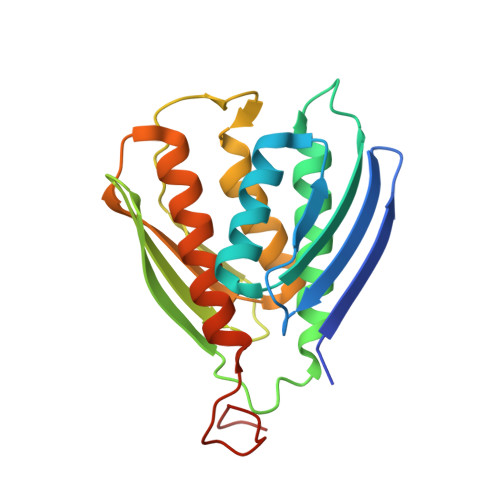Mirror-Image Packing Provides a Molecular Basis for the Nanomolar Equipotency of Enantiomers of an Experimental Herbicide.
Bisson, C., Britton, K.L., Sedelnikova, S.E., Rodgers, H.F., Eadsforth, T.C., Viner, R.C., Hawkes, T.R., Baker, P.J., Rice, D.W.(2016) Angew Chem Int Ed Engl 55: 13485-13489
- PubMed: 27717128
- DOI: https://doi.org/10.1002/anie.201607185
- Primary Citation of Related Structures:
5DNL, 5DNX, 5EKW, 5EL9, 5ELW - PubMed Abstract:
Programs of drug discovery generally exploit one enantiomer of a chiral compound for lead development following the principle that enantiomer recognition is central to biological specificity. However, chiral promiscuity has been identified for a number of enzyme families, which have shown that mirror-image packing can enable opposite enantiomers to be accommodated in an enzyme's active site. Reported here is a series of crystallographic studies of complexes between an enzyme and a potent experimental herbicide whose chiral center forms an essential part of the inhibitor pharmacophore. Initial studies with a racemate at 1.85 Å resolution failed to identify the chirality of the bound inhibitor, however, by extending the resolution to 1.1 Å and by analyzing high-resolution complexes with the enantiopure compounds, we determined that both enantiomers make equivalent pseudosymmetric interactions in the active site, thus mimicking an achiral reaction intermediate.
Organizational Affiliation:
Krebs Institute for Biomolecular Research, Department of Molecular Biology and Biotechnology, University of Sheffield, Firth Court, Western Bank, Sheffield, S10 2TN, UK.




















